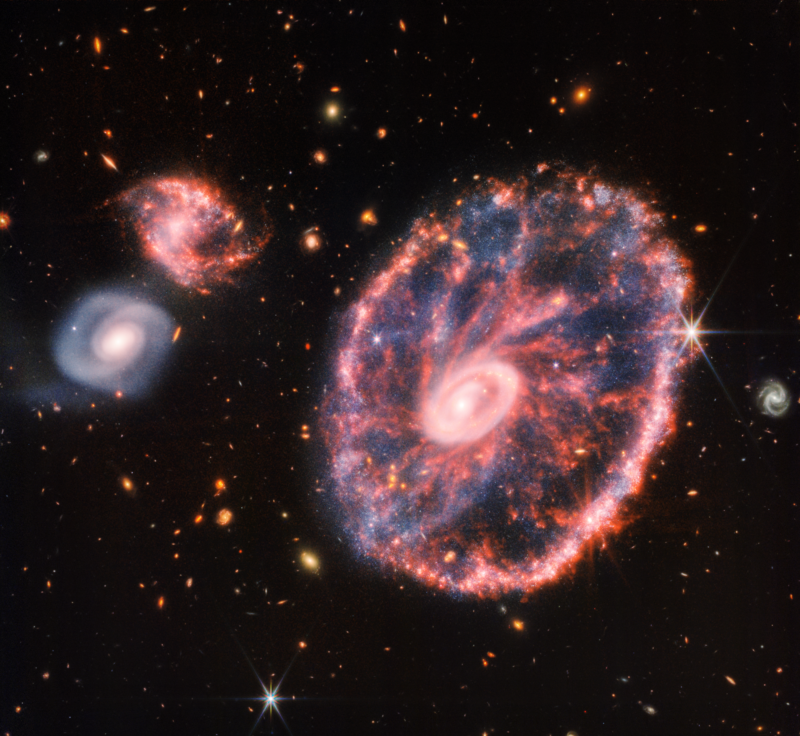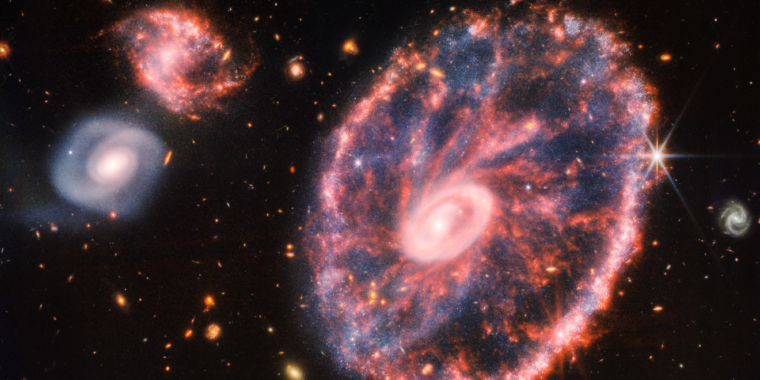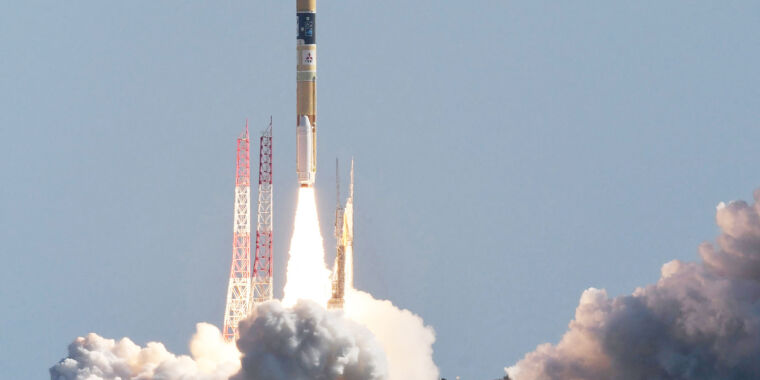
There is more than one reason why the Mid-Infrared Instrument (MIRI) on board the James Webb Space Telescope (JWST) is considered to be pioneering. Of the four instruments on JWST, it’s the only one that observes in the mid-infrared range, from 5 to 28 microns; the other three are near-infrared devices with a wavelength range of 0.6 to 5 microns. To reach these wavelengths, MIRI had to be kept the coldest of any instrument on JWST, meaning it essentially set the requirements for the telescope’s cooling system.
The stunning images taken by MIRI are a testimony to the remarkable engineering feats that went into it, feats that were achieved by overcoming formidable challenges through meticulous transatlantic teamwork and coordination.
Making MIRI
“I remember being told in the early days that the instrument will never be built. Some people at NASA looked at the block diagram of our management structure and said it will never work,” Professor George Rieke, who leads the science team of MIRI, recalled.
MIRI was jointly built by the Jet Propulsion Lab and a European consortium involving several institutions. While the control software and detector electronics were developed at JPL in the US, major subsystems of the instrument were developed in the UK, France, Germany, Belgium, Netherlands, Denmark, Sweden, Ireland, Spain, and Switzerland.
Although everything eventually fell into place, there were moments when Professor Gillian Wright, who is the European principal investigator for MIRI, harbored some nervousness. One of them was about the possibility of budget cuts in the US impacting the project. “Since it was a 50-50 partnership, there were some things the US was required to provide. There were times when I thought, ‘I hope they really do,’” she said.
Wright also said the US government’s International Trade in Arms Regulations (ITAR) restrictions created some hurdles, especially in the early days. “By definition, space hardware falls under [ITAR]. We would have liked a bit more insight into the things the US was providing. But it was a struggle due to ITAR restrictions,” she added.
The team also faced other challenges related to military uses, starting with MIRI’s imaging detectors, which convert mid-infrared light into electrical signals. “We were using a detector type that was developed in the US for military purposes. By the time we started developing MIRI, the military had moved to other types. So it wasn’t strongly supported,” Rieke recalled.
He said the MIRI team had to work with the manufacturer to recover a key step in building the detectors. “To get these detectors when they were sidelined by the manufacturer was a scary part,” he said.
Keeping things cool
The second challenge was to ensure the detectors worked properly by achieving a temperature of 7 kelvin (266º C below freezing). It may not sound like it, but this is much lower than the 37 kelvin (-236º C) achieved by the radiative coolers on JWST.
According to Wright, the cooler had the potential to put the MIRI project at risk. Initially, the MIRI team had designed a thermos-like container filled with liquid hydrogen to keep the instrument cool. However, this system, which could cool MIRI for five to 10 years, weighed a lot. “The observatory was over its mass budget. One way of saving the mass was to take away this system and replace it with an active cooling mechanism,” Wright said.
This decision posed a different set of problems. “It was a significant change happening late after the MIRI design had been confirmed. Though the active cooling technology had been in development for other future missions, it hadn’t been designed for JWST and MIRI until then. It was a risk because the technology development started about five years behind the rest of the telescope,” Wright said.
However, the cloud of uncertainty was removed due to what Wright termed “JPL’s superb job.”








